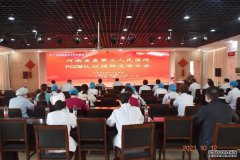精品赏析:五铢钱
中国古代钱币萌芽于夏代,最初以贝币作为交换单位,起源于殷商,发展于东周,统一于赢秦,历经了四千多年的漫长历史,创造了七十多项世界之最。
Ancient Chinese coins originated in Xia Dynasty, originated in Shang Dynasty, developed in Eastern Zhou Dynasty and unified in Winning Qin Dynasty. After more than 4,000 years of long history, they created more than 70 world's largest coins.
【藏品名称】:五铢钱
[Collection Name]: Five Baht Money
【类别】:钱币
[Category]: Coins

汉武帝于元鼎四年(前113年) 下令禁止郡国铸钱,把各地私铸的钱币运到京师销毁,将铸币大权收归中央。中央政府成立专门的铸币机构,即由水衡都尉的属官 (钟官、辨铜、技巧三官) 负责铸钱。钟官负责铸造,辨铜负责审查铜的质量成色,技巧负责刻范。面文“五铢”二字的钱最初铸于汉武帝元狩五年 (公元前118年),重如其文,被称为五铢钱。
Emperor Wudi of the Han Dynasty ordered in the fourth year of Yuan Ding (113 years ago) that the county and state should be forbidden to mint money, and that the money minted privately from all over the country should be transported to Beijing Normal University for destruction, and the power of minting money should be restored to the central government. The central government has set up a special mint, in which the subordinate officials of shuiheng Duwei (Zhong Guan, discerning copper and skilled officials) are responsible for the coinage. Zhong Guan is responsible for casting, distinguishing copper is responsible for examining the quality and fineness of copper, and skill is responsible for model cutting. The money with the word "five baht" was originally cast in the fifth year of Yuan Shou (118 B.C.) of Emperor Wudi of Han Dynasty. It is called "five baht money" as it is written in Chinese.

五铢钱是秦汉货币史上的一大转折,实现了中央对货币铸造权的集中统一。西汉时期的五铢钱,枚重五铢,形制规整,重量标准,铸造精良。王莽篡汉以后,改国号为新朝,王莽颁布一系列改变币制的法令,禁五铢,行新钱,先后规定的货币三十余种,其形式模仿周制,等级庞杂,使用不便,不足值的大额货币泛滥,苛法强制推行,导致经济的极大混乱,不久即告失败。由于王莽禁汉,导致大量的汉五铢被集中销毁,王莽下令,凡使用五铢或收藏五铢的,重则极刑轻则鞭刑,一度盛行的五铢钱,遭到了毁灭性的打击。
The five baht money is a great turning point in the history of money in Qin and Han Dynasty, which realizes the centralization and unification of the central government's right to money foundry. In the Western Han Dynasty, five baht coins weighed five baht, with regular shape, standard weight and excellent casting. After Wang Mang usurped the Han Dynasty, he changed the name of the country to the New Dynasty. Wang Mang promulgated a series of decrees to change the currency system, forbidding five baht and making new money. He successively prescribed more than 30 kinds of currencies. Their forms imitated the system, their ranks were numerous and miscellaneous, inconvenient to use, the overflow of large currencies with insufficient value, and the enforcement of harsh laws, which led to great economic chaos and soon failed. As Wang Mang banned Han people, a large number of Han baht were destroyed centrally. Wang Mang ordered that anyone who used or collected the baht should be punished with extreme punishment rather than flogging. The once prevalent baht money suffered a devastating blow.
东汉建武十六年,光武帝刘秀重新推行为王莽改制所一度中断的五铢钱制,对社会经济的恢复起到积极的作用。三国两晋南北朝隋唐五代十国时期,是中国货币发展史上的一个重要转变期,隋代在全国范围内推行统一标准的五铢钱,同时严禁私铸及其他旧币使用。至开皇五年隋五铢便成为国内统一的法定货币。
In the sixteen years since the founding of the Eastern Han Dynasty, Emperor Guangwu Liu Xiu reintroduced the five baht money system once interrupted by Wang Mang's restructuring, which played a positive role in the social and economic recovery. Three Kingdoms, Jin, Southern and Southern Dynasties, Sui, Tang, Five Dynasties and Ten Kingdoms are an important period in the history of China's currency development. The Sui Dynasty promoted a unified standard of five baht money throughout the country, and strictly prohibited the use of private coins and other old coins. In the fifth year of Kaihuang, the Sui baht became the unified legal currency in China.
此币外圆内方,象征着天地乾坤。正面书有“五铢”二篆字,字体修长秀丽,风格一致,“五”字交笔缓曲,上下与两横笔交接处略向内收。“铢”字“金”头有如箭镞形。其面郭较宽,形制整齐,肉面光洁,钱内外郭略高于钱肉,薄厚一致。此币印制规整,钱型厚重,品相完整,文字美观大方,锈色自然流畅,古朴大气。整体打铸深峻,轻重适宜,铸工精细,字文凸起,边棱料宽,外郭稍阔,铜色浑厚匀称,内外郭宽窄均匀,规矩整齐,极具收藏价值。
This coin is inside the outer circle, which symbolizes heaven and earth. The front book has "five baht" two seal characters, the font is long and beautiful, the style is the same, the "five" character handed over slowly, the upper and lower and two horizontal pens handed over slightly inward. The "baht" word "gold" has an arrow-shaped head. Its breadth, neat shape, smooth meat, slightly higher than the money inside and outside the Guo, thin and thick consistent. This currency is well-regulated in printing, heavy in shape, complete in appearance, elegant in writing, natural and smooth in rust, and simple in atmosphere. The whole casting is deep, light and suitable, the casting worker is fine, the characters are prominent, the edges are wide, the outer perimeter is slightly broad, the copper color is thick and symmetrical, the inner and outer perimeter is narrow and even, the rules are neat, and has great collection value.
古钱币虽小,其身上却印着丰富的历史足迹。如今遗传在世的精品古钱币虽然并不多,但是每枚精品古币价值却是不菲。古钱币的价格是由存世量、艺术价值和历史价值判断的,而且随着市场供需关系的变化而产生不同程度的波动。
Although ancient coins are small, they bear rich historical footprints. Nowadays, although there are not many exquisite ancient coins inherited from the world, the value of each exquisite ancient coin is quite high. The price of ancient coins is determined by the amount of money, artistic value and historical value, and fluctuates with the change of market supply and demand.
郑州臻哲网络科技有限公司
Zhengzhou Zhen Zhe Network Technology Co., Ltd.
咨询热线:4006863616
Hotline: 4006863616

- 上一篇:精品赏析:北洋造光绪元宝
- 下一篇:献礼剧《奔腾年代》将播 佟大为变身浪漫工科男
- 新闻
- 房产
- 汽车
- 娱乐
- 体育





















